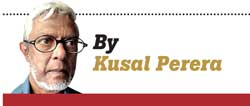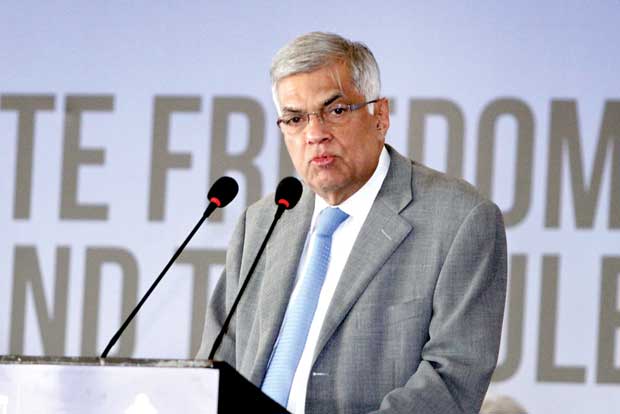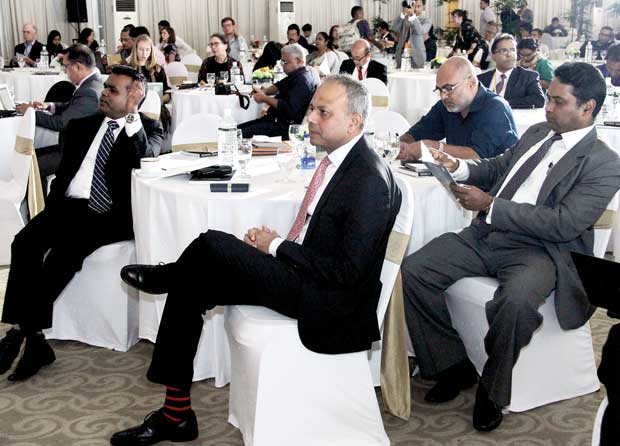Reply To:
Name - Reply Comment
Last Updated : 2024-04-19 11:04:00

UNESCO has over the decades contributed very much in establishing social acceptance for “the free flow of ideas by word and image” and thus works to foster free, independent and pluralistic media in print, broadcast and online, across the globe. Their  work, though accepted as necessary and given much prominence by Member States, we live in a world where the media map is coloured ‘Black’ and ‘Red’ in more places than it was the previous year.
work, though accepted as necessary and given much prominence by Member States, we live in a world where the media map is coloured ‘Black’ and ‘Red’ in more places than it was the previous year.
Releasing its findings at the ‘World Press Freedom Day’ in May 2017, the global indicator by RSF classifies 21 countries as ‘very bad,’ and 51 (two more than last year) as ‘bad’. In all, the situation has worsened in nearly two thirds (62.2%) of the 180 countries in the Index. On the World Map, Sri Lanka is painted ‘Red’ along with its SAARC Members, termed ‘difficult situation’. The question is how difficult? The answer is wholly dependent on who answers that question and from where.
This week on Monday 04 December, delivering the keynote address at the UNESCO initiated Seminar in Colombo on ‘Reinforcing Regional Co-operation to Promote Freedom of Expression and the Rule of Law in Asia through Ending Impunity for Crimes Against the Journalists’, Prime Minister Wickremesinghe told the distinguished gathering, since his government took office in 2015 January, crimes against media and abductions, murder, attacks or intimidation against journalists have come to a complete stop. Speaking in Sinhala he also said, “The present task now is to ensure that crimes committed against media are investigated. There was a time under Rajapaksa,when nothing was moving.” Following up with his usual verbal attacks on media and rusty political remarks about some media working overtime to topple his government, to bring back Rajapaksa, he nevertheless raised the important question, how serious the editors and journalists are about crimes committed against media and fellow journalists during the previous regime.

On this same day, the “Tamil Guardian” reported Shanmuganathan Manoharan, a news anchor working with “Yarl” FM was attacked on Saturday by 3 men on a trishaw who blocked his vehicle at Chavakachcheri. This remains an incident the Colombo mainstream Sinhala and English media and the web media have not carried thus far. There were numerous attacks and threats on Tamil media personnel in the North even after 2015 January, the Colombo media activists pay no attention to.
That apart, there are continuous intimidations through surveillance by State security agencies on what the North-East journalists cover on their daily routine. And that goes without being questioned by any media activist in Colombo. This cold and silent intimidation has made it extremely difficult to recruit youth as journalists. Parents don’t want their children to take to a profession that is “risky”. That part of Sri Lanka has never been in the media map drawn in Colombo.
With that Southern fixation, there are serious issues the Colombo media “pundits” keep ignoring. First is the issue of investigations into at least the few attacks on media, abductions and murder of journalists, the Colombo human rights champions hyped during the anti Rajapaksa campaign. Truth is that, not only is this government not serious about any of those atrocities but is also inefficient in getting relevant agencies act right and soon. This government has not acted in any way to prove it is serious about these investigations to win over trust and confidence of the public. It is also a fact that editors and journalists don’t use the media they work in, for continuous follow up and don’t campaign to pressurise the government and hold it responsible for independent and efficient investigations.
These together, the lethargy and inefficiency of the government and the awful lack of interest in media over follow up work have allowed many spanners to be thrown in and cogwheels to grind to a halt. There is also no legal provision here in Sri Lanka for third party intervention to challenge such obstructions in the due process of law. In some Western countries and in particular the USA, law is such not even the US President could intervene in any investigation that could be seen as obstructing the due process of the law taking place. Any intervention, even requesting the “consent” of the President or the PM in making an arrest would be a criminal offence in the USA. The racist and behaviour of Galagodaatte Gnanasara Thera in open Court would have not only amount to contempt of court, but would have also been a criminal act of obstructing due process of the law taking place, if such a law was in place here in Sri Lanka.

While it is the glaring lack of media interest in attacks against the media and journalists that allowed the PM to hold editors and journalists guilty of giving into such atrocities, it is also media negligence that has to date denied serious discussion on what media freedom is and how freedom of expression can be exercised and enjoyed in media. This in turn has left both media freedom and professionalism badly compromised. Most media personnel except in State owned and traditional leading print media go without any guarantee of employment. In most electronic and in newly organised print media that mushroomed in recent past,the editorial staff can hardly call themselves “journalists” while they are taken care of not for their professionalism, but for their willingness to serve the “Master”. This unfortunately has left media personnel outside collective engagement in ensuring and improving their own careers as professional journalists and independent to ensure “freedom of expression”.
That absence of collective engagement by editors and journalists in ensuring independence in their own professional careers cannot be substituted by few ‘pundits’ and ‘member less’ associations and organisations in Colombo who believe they can impress upon the government with their funded training projects on media freedom, theorising on freedom of expression to their own comfort.
The racist and behaviour of Galagodaatte Gnanasara Thera in open Court would have not only amount to contempt of court, but would have also been a criminal act of obstructing due process of the law taking place, if such a law was in place here in Sri Lanka
We thus have impunity being condemned and talked about but continuing unabatedly, no different to the Rajapaksa era. In between every year an international day comes round when invitee participants would gather and talk about “media freedom and freedom of expression” to find excuses for long delays over investigations, blame the previous regime and promise the past would not be allowed to recur again in the future. That comfort was ruffled and disturbed last Monday by an accidental last minute invitee to the Seminar at the Taj Samudra.
Coming from the forgotten North, Devanayagam Premanand, the Executive Editor of the Jaffna based “Uthayan” newspaper, the worst affected of all media and publishing houses in the country, handed to the Minister of Law and Order, Sagala Ratnayake, a detailed list amounting to 35 cases of attacks on Uthayan and its media personnel. After handing over the long list, Premanand said the same was handed over one year ago to the PM, who like his Minister this time, promised to have them investigated. But one year gone, Uthayan has so far heard of no investigations into any of the cases. Impunity lies very much there.
PM said since 2015 January, crimes against media and abductions, against journalists have come to a complete stop
Impunity is also about the forgotten killings of journalists in the North-East that is not included in the list of attacks and killings detailed by the Uthayan Executive Editor. From the early morning January 2004 killing of Sudar Oli reporter S.S. Rajan in Trincomalee town and May 2004 broad day light murder of Veerakesari staffer Aiyathurai Nadesan in Batticoloa, there were 05 more recorded killings of journalists in North-East before the end of August 2007 that never became an issue for any human rights or media organisation in Colombo. The only exception was Mylvaganam Nimalarajan who was shot dead within the high security zone in Jaffna, 17 years ago in October 2000. That perhaps was due to him being the Correspondent for BBC Tamil and Sinhala Services and a frequent writer to the weekend Sinhala broadsheet “Ravaya”. Unbelievably, this yet to be concluded murder case in Courts, is now 16 years old since filing.
The Southern fixation on HR campaigns is due to petty Sinhala politics of the Colombo campaigners. All HR campaigns that include media freedom and freedom of expression, are by nature “anti government”. When Mahinda Rajapaksa campaigned against disappearances and killings in the South during the 88-90 JVP insurgency, that HR campaign targeted the UNP government and was a Sinhala HR campaign. It was proved as such when Mahinda with Mangala Samaraweera launched the Mothers’ Front (MF) in 1990. They capitalised on using Richard de Zoysa’s mother Dr. Manorani Saravanamuttu, a respected urban middle class figure as the Chair of the MF .But they refrained from going into a common platform with the very militant Jaffna MF that agitated against disappearances in the North from 1984 onwards.
The HR campaign against the Rajapaksa regime was also a Sinhala HR campaign. While the Colombo HR leaders went to Geneva to campaign against the Rajapaksa government using Colombo “white vans” and attacks on journalists in the South, the Tamil HR lobby in Geneva was only a parallel campaign that demanded answers for their grievances.Thus PrageethEkneligoda’s wife becomes an icon against abductions and disappearances in the South with a perfectly fitting Sinhala Buddhist image but not militant campaigners like Jeyakumari Jeyabalan and Ananthi Sasitharan. These Tamil names they believe would have hampered their positioning of the HR campaign as an anti Rajapaksa campaign in collecting Sinhala votes.
The present task now is to ensure that crimes committed against media are investigated. There was a time under Rajapaksa,when nothing was moving
The media campaigns in Colombo are no different. They not only lack any seriousness, but also are a part of the Sinhala HR campaign. Nothing more nor nothing better.
pics by Pradeep Dilrukshana

Add comment
Comments will be edited (grammar, spelling and slang) and authorized at the discretion of Daily Mirror online. The website also has the right not to publish selected comments.
Reply To:
Name - Reply Comment
On March 26, a couple arriving from Thailand was arrested with 88 live animal
According to villagers from Naula-Moragolla out of 105 families 80 can afford
Is the situation in Sri Lanka so grim that locals harbour hope that they coul
A recent post on social media revealed that three purple-faced langurs near t